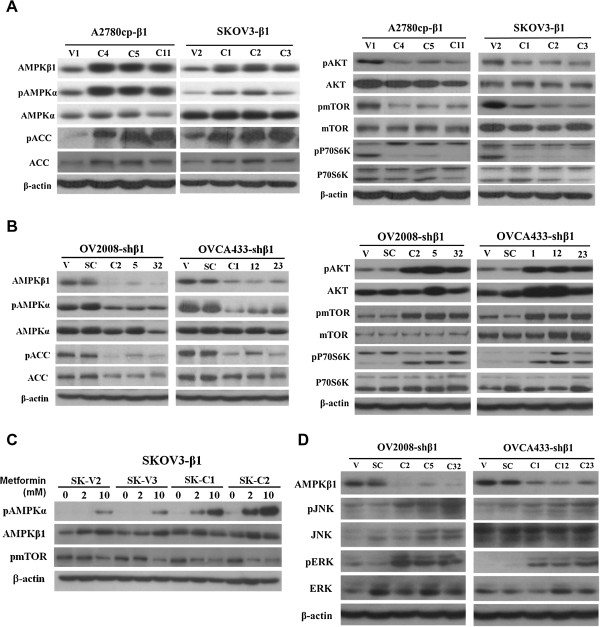Figure 5.
AMPK-β1 positively regulates AMPK but negatively modulates AKT/mTOR, ERK and JNK activities. (A) AMPK-β1 overexpression in A2780cp (C4, C5 and C11) and SKOV3 (C1, C2 and C3) cells activated AMPK (increased pAMPKα and pACC (left panel)) but reduced AKT (pAKT) and mTOR (pmTOR and pP70S6K) activities (right panel). (B) Knockdown of AMPK-β1 in OV2008 (C2, C5 and C32) and OVCA433 (C1, C12 and C23) cells by shRNA suppressed AMPK activity (decrease of pAMPKα and pACC (left panel)) but elevated AKT (pAKT) and mTOR (pmTOR and pP70S6K) activities (right panel). (C) AMPK-β1 overexpression sensitizes ovarian cancer cells to an AMPK activator, metformin, during AMPK activation. SKOV3 cells were treated with the AMPK activator, metformin, at 0-, 2-, and 10-mM concentrations. Stable clones overexpressing AMPK-β1 (C1, C2, C4, and C5) were more sensitive to metformin (2 mM) in the presence of elevated pAMPKα compared with the two empty vector controls (V2 and V3). (D) Depletion of AMPK-β1 activates the ERK and JNK pathways, and knockdown of AMPK-β1 in OV2008 (C2, C5 and C32) and OVCA433 (C1, C12 and C23) cells led to an increase in JNK (pJNK) and ERK (pERK) signaling activities.

